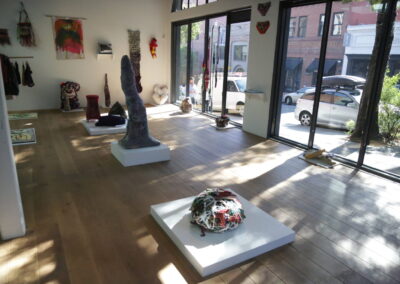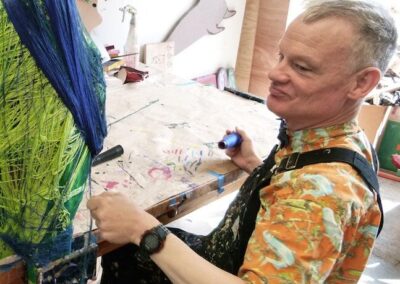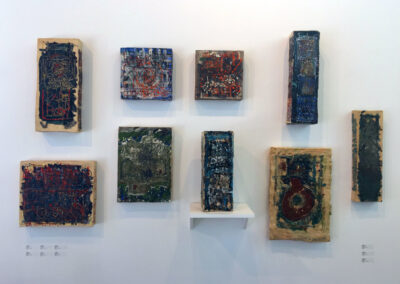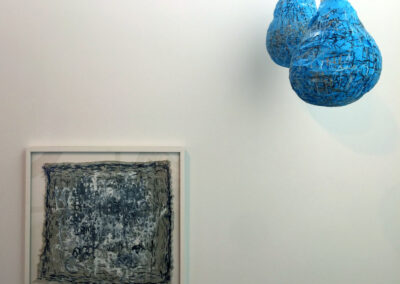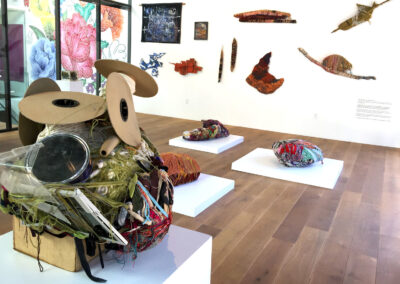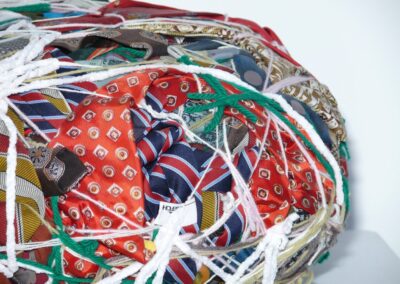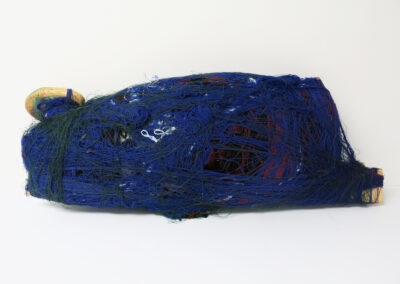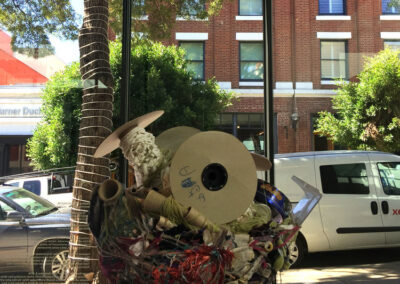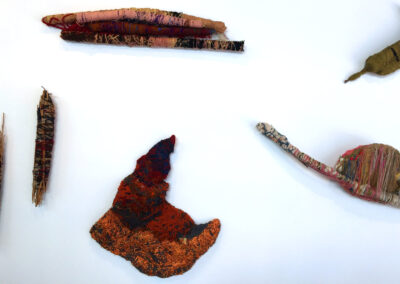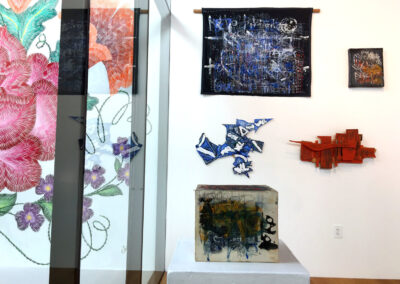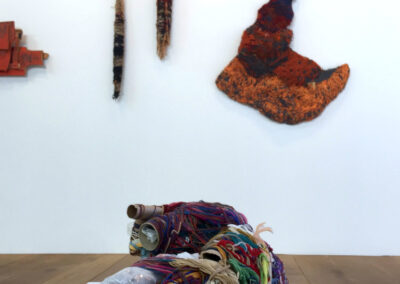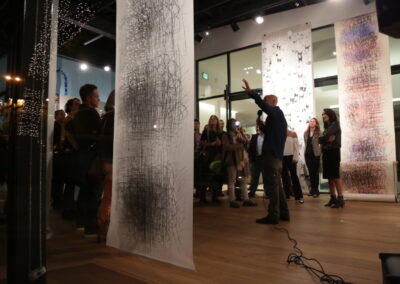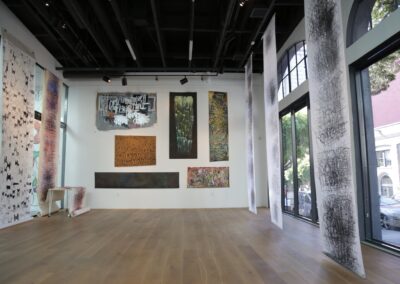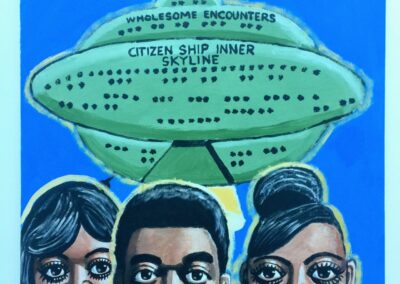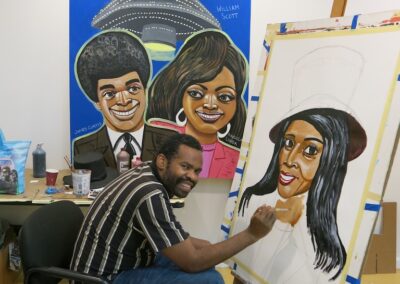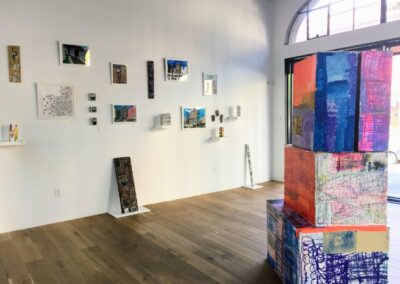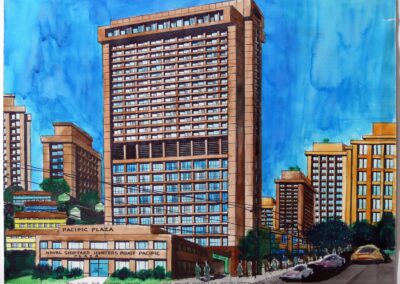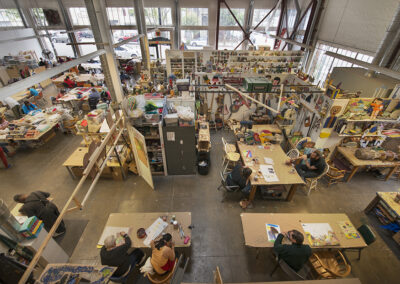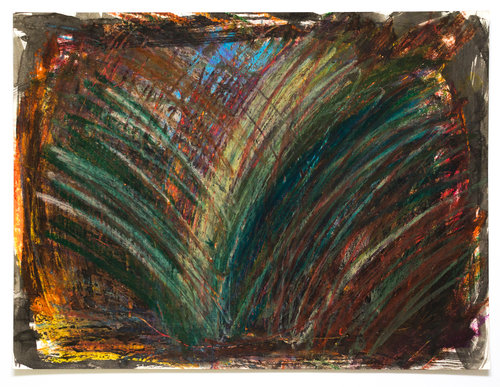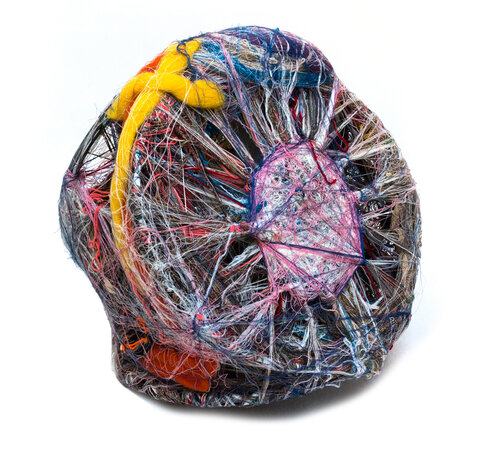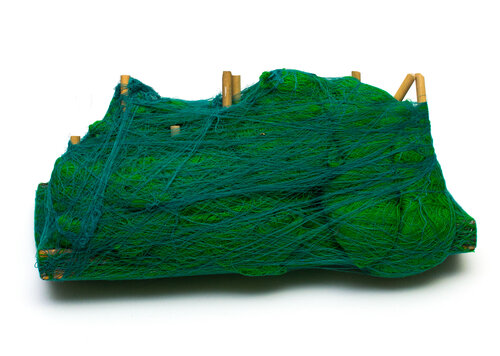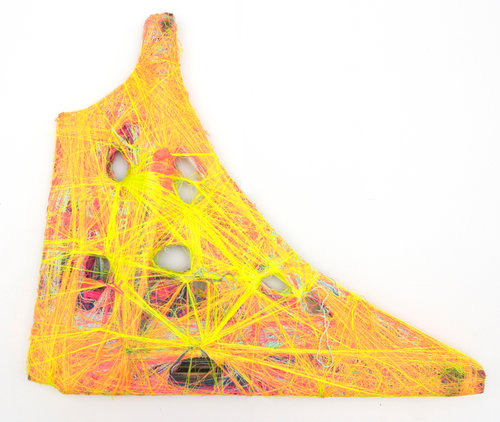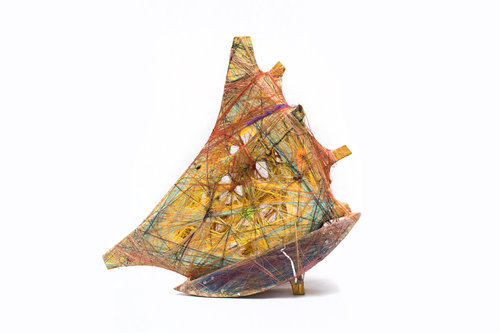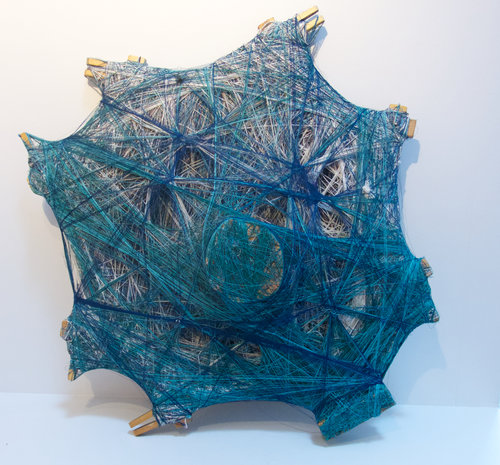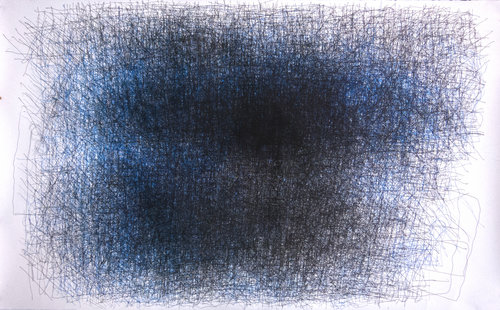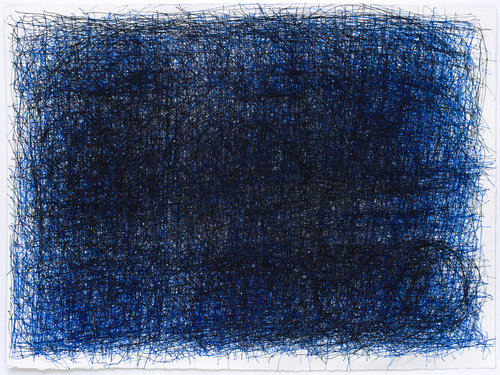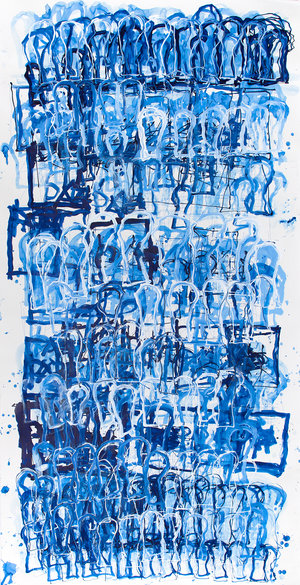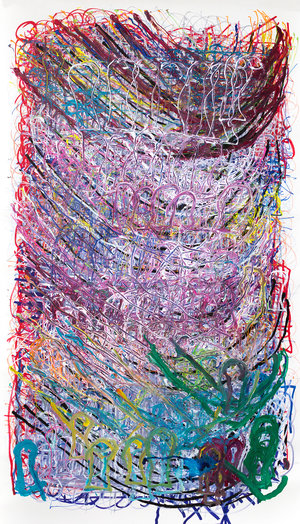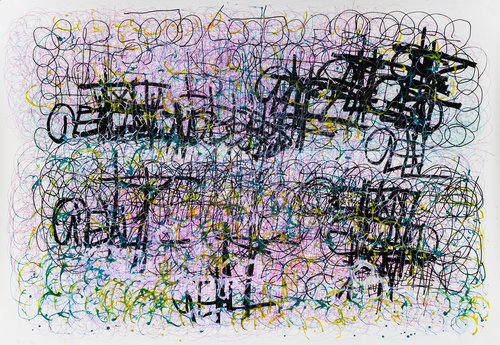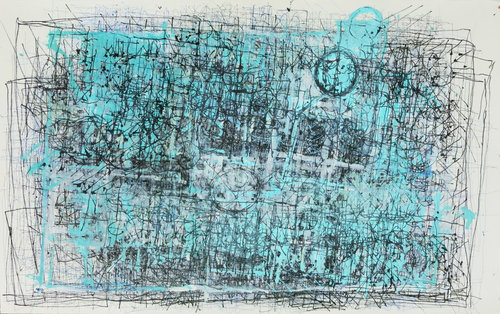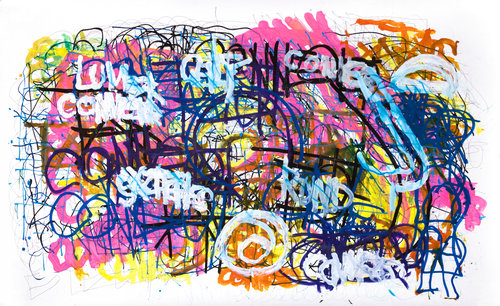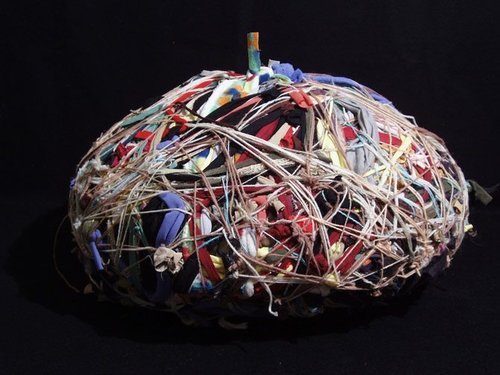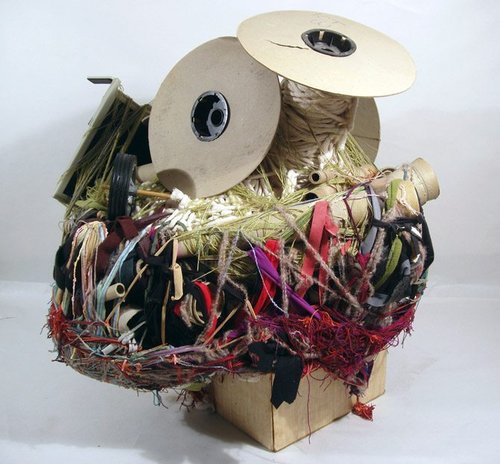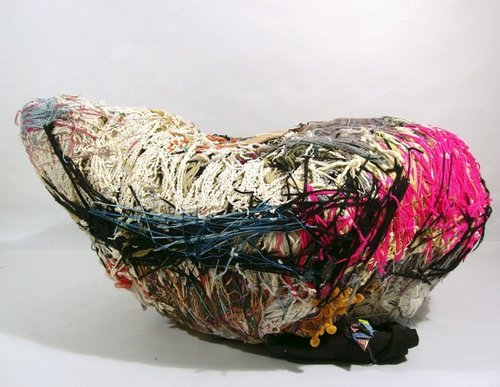Creative Growth, known for supporting and representing adult artists with developmental, mental, or physical disabilities, crossed the bridge from Oakland to San Francisco for an eighth-month run of three exhibitions at 836M.
The four-month programming comprised of four exhibitions:
Common Threads highlighted notable works from Creative Growth’s fiber arts and fashion projects, emphasizing new work from Tony Pedemonte, whose work parallels that of Creative Growth’s internationally renowned fiber artist Judith Scott. Common Threads highlighted original garments for Creative Growth’s noted fashion show Beyond Trend.
The second exhibition, LARGE DRAWINGS, included work from Dan Miller, the first artist with autism to have a piece purchased by the Museum of Modern Art (MoMA). Miller’s large-scale drawings are contemporary constructions using text as their foundation.
Home presented a series of depictions of new worlds or homes that feature William Scott’s take on a more “wholesome” San Francisco, including his renditions of public housing projects. Scott, a San Francisco resident, is also included in the permanent collection of MOMA and uses his work to craft new utopian cityscapes and a renewed vision of San Francisco in the future.
The exhibition ended with VIVE l’ART-JUDITH SCOTT AND DAN MILLER AT THE VENICE BIENNALE, celebrating the invitation extended to Creative Growth artists Dan Miller and Judith Scott to participate in the 57th International Exhibition of the Venice Biennale. Together, the work of Judith Scott and Dan Miller has changed the understanding and appreciation of how artists with developmental disabilities can become a part of the contemporary art world.
EXHIBITION DATES:
CURRENTLY BASED:
ARTIST WEBSITE:

Tony Pedemonte constructs armatures of wood and recycled materials that he then wraps in layers of yarn and thread until the structure is nearly concealed. Pedemonte works with high energy and intention – never pausing to consider his next move, just following his own intuition. Despite comparison to Creative Growth artist Judith Scott, Pedemonte’s process and finished work is entirely different from Scott’s (whom he never met), demonstrated by their tactile and enigmatic presence. Like his sculptures, his works on paper begin with a drawn figure that he obscures with frenzied mark making and sweeping gestures that cover his workspace and reach beyond the paper’s edge. Watching Pedemonte work is like an athletic or performative feat – his is grounded by the use of his body as a tool for expression. Pedemonte is a recipient of the 2021 Wynn Newhouse Award.
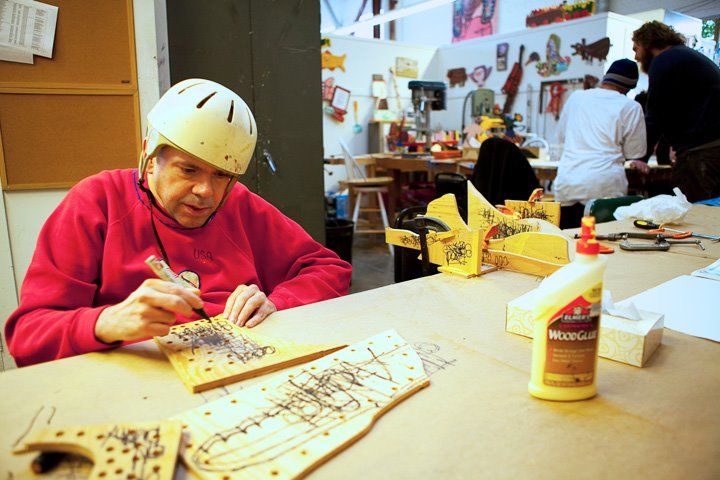
Dan Miller’s artwork is composed of obsessive overlays of words and imagery that often build to the point of abstraction. Each work contains a written record of Miller’s interests in hardware stores, lightbulbs, electrical sockets and familiar people, however only a few words are identified in its final stage. Miller was encouraged at an early age to write words and numbers in order to communicate. This became the primary influence on his artistic practice, transforming text into graphic elements, and employing an abstracted visual language as a tool of inquiry and expression.
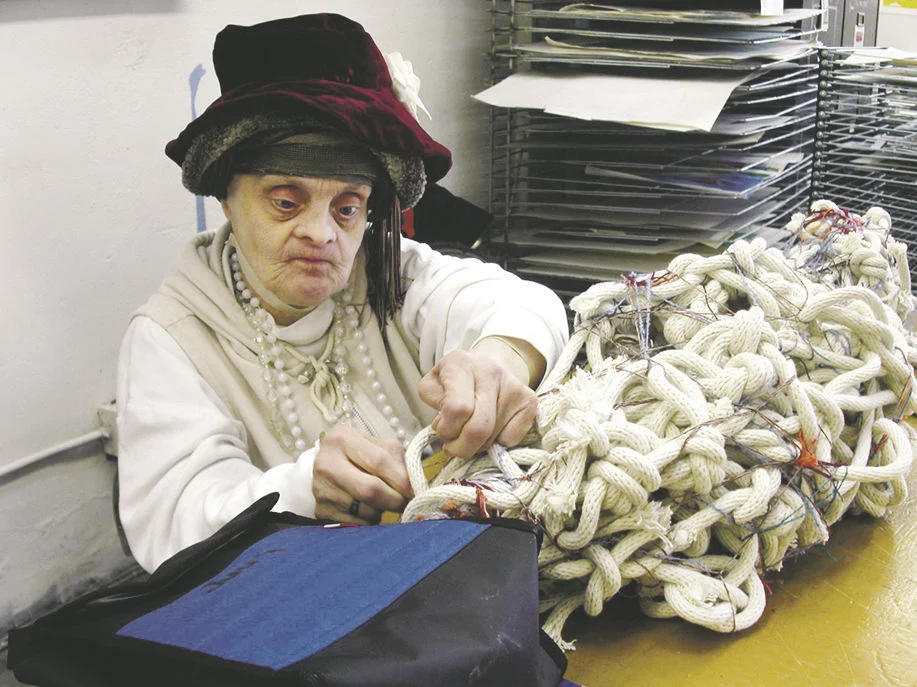
Judith Scott was born in Ohio with her fraternal twin sister Joyce in 1943. Scott was institutionalized at the age of seven at the Columbus State School. She would remain in state institutions until 1985, when Joyce became her legal guardian and brought her to California. Scott entered the Creative Growth Studio in 1987, initially displaying little artistic interest until a visiting artist workshop with the sculptor Sylvia Seventy, during which Scott discovered the medium of fiber art. Her wrapped sculptures, abstract in shape, were sourced from handbuilt armatures from discarded or found materials, often concealing an inner structure or a cache of items. Her practice was marked by her independence, self-direction, and for never repeating a form or color scheme in her multi-media textile sculptures. Scott created nearly 100 sculptures during her tenure in the Creative Growth Studio, where she practiced until her death in 2005.
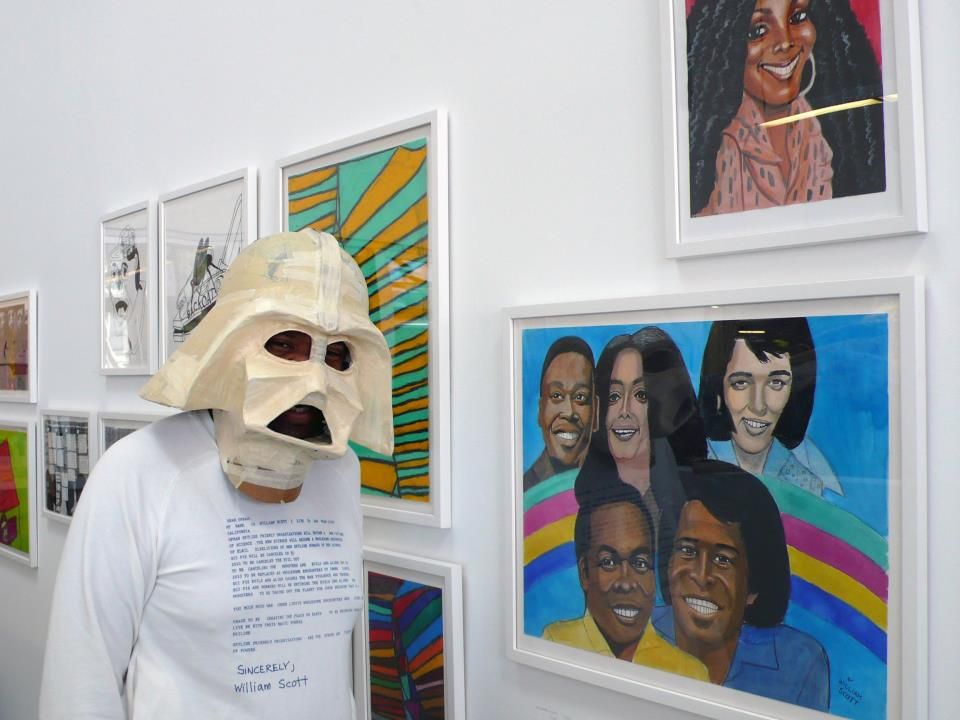
A self-taught artist, William Scott’s practice imagines alternative realities that stem from a fundamental belief in the potential for positive human transformation. While deeply rooted in personal history, Scott’s paintings address wider questions of citizenship, community, and cultural memory. His portrait series of predominantly Black figures encompasses actors, musicians, politicians, and civil rights leaders, as well as self-portraits, family members, and women from the Baptist church he has attended since childhood. Frequently describing himself as an architect, Scott reinvents the social topography of gentrified San Francisco, which emerges as the utopian ‘Praise Frisco’ in works that combine architectural design with civic responsibility. The proposals for new buildings, neighborhoods, and community centers describe his compelling desire for a more equitable society. While Scott’s paintings are hopeful and sincere, they equally confront loss and contemplate ideas of renewal and rebirth. His long-standing ‘Inner Limits’ series takes the form of spaceships that are designed to resurrect the dead to start new lives and bring peace to the earth via ‘Wholesome Encounters.’

